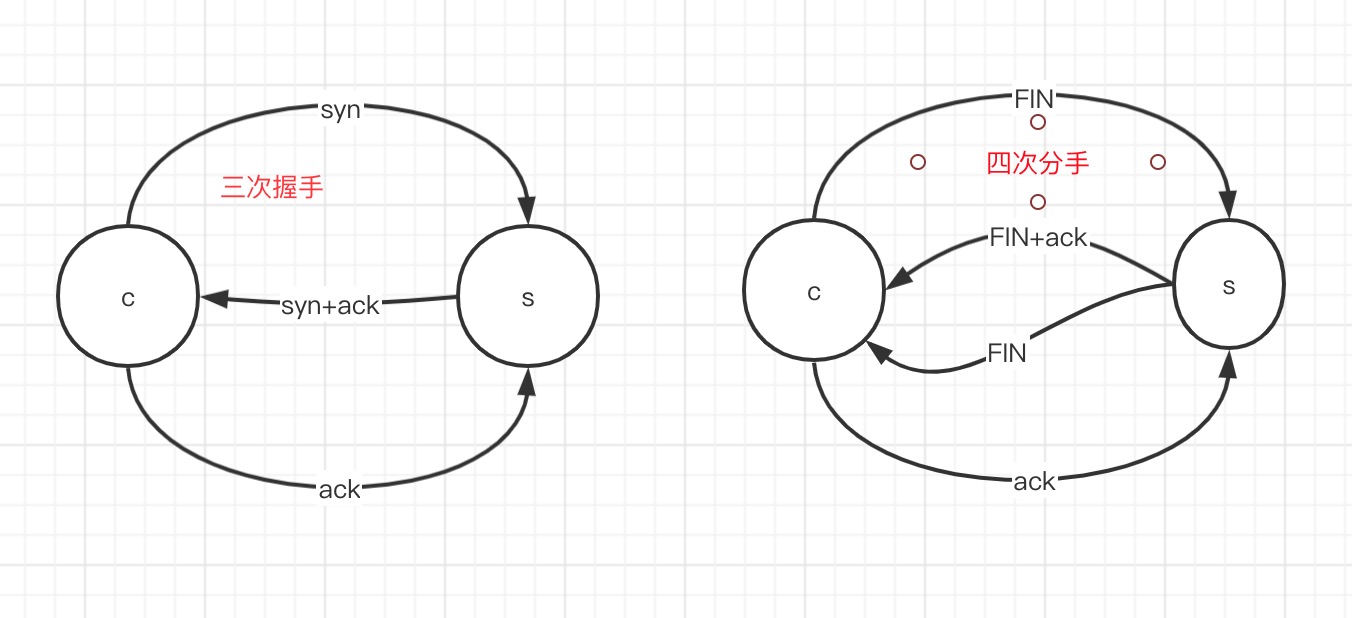TCP
应用层–>传输层–>网络层–>链路层–物理层
三次握手
四次分手

IO消耗
- 程序调用
- 用户态调用切换到系统调用
BIO
每个线程对应每个连接
优势:可接收很多的连接
问题:
- 线程内存浪费
- cpu调度消耗
根本原因:
BLOCKING 阻塞: accept recv
演变的解决方法 –>NONBLOCKING 非阻塞
NIO
New IO
NONBLOCKING
优势:避免多线程问题
弊端:假设有1w个连接,只有一个发来数据,每循环一次
其实都需要向内核发生1w次reav系统调用,这里有9999是无意义的
消耗时间和资源(用户空间向内核空间的循环遍历,复杂度在系统调用上)
package com.mashibing.io.nio;
import java.io.IOException;
import java.net.InetSocketAddress;
import java.nio.ByteBuffer;
import java.nio.channels.SelectionKey;
import java.nio.channels.Selector;
import java.nio.channels.ServerSocketChannel;
import java.nio.channels.SocketChannel;
import java.util.Iterator;
import java.util.Set;
public class Server {
public static void main(String[] args) throws IOException {
ServerSocketChannel ssc = ServerSocketChannel.open();
ssc.socket().bind(new InetSocketAddress("127.0.0.1", 8888));
ssc.configureBlocking(false);
System.out.println("server started, listening on :" + ssc.getLocalAddress());
Selector selector = Selector.open();
ssc.register(selector, SelectionKey.OP_ACCEPT);
while(true) {
selector.select();
Set<SelectionKey> keys = selector.selectedKeys();
Iterator<SelectionKey> it = keys.iterator();
while(it.hasNext()) {
SelectionKey key = it.next();
it.remove();
handle(key);
}
}
}
private static void handle(SelectionKey key) {
if(key.isAcceptable()) {
try {
ServerSocketChannel ssc = (ServerSocketChannel) key.channel();
SocketChannel sc = ssc.accept();
sc.configureBlocking(false);
//new Client
//
//String hostIP = ((InetSocketAddress)sc.getRemoteAddress()).getHostString();
/*
log.info("client " + hostIP + " trying to connect");
for(int i=0; i<clients.size(); i++) {
String clientHostIP = clients.get(i).clientAddress.getHostString();
if(hostIP.equals(clientHostIP)) {
log.info("this client has already connected! is he alvie " + clients.get(i).live);
sc.close();
return;
}
}*/
sc.register(key.selector(), SelectionKey.OP_READ );
} catch (IOException e) {
e.printStackTrace();
} finally {
}
} else if (key.isReadable()) { //flip
SocketChannel sc = null;
try {
sc = (SocketChannel)key.channel();
ByteBuffer buffer = ByteBuffer.allocate(512);
buffer.clear();
int len = sc.read(buffer);
if(len != -1) {
System.out.println(new String(buffer.array(), 0, len));
}
ByteBuffer bufferToWrite = ByteBuffer.wrap("HelloClient".getBytes());
sc.write(bufferToWrite);
} catch (IOException e) {
e.printStackTrace();
} finally {
if(sc != null) {
try {
sc.close();
} catch (IOException e) {
e.printStackTrace();
}
}
}
}
}
}
多路复用
-
同步IO模型: 如果成自己读取IO,那么这个IO模型,无论是BIO,NIO,多路复用器,都叫做 同步IO模型
- 多路复用器:还是得自己来读取数据
- select,poll,epoll 都是同步的
select 和poll的优劣
优势:通过一次系统调用,把fds,传递给内核,内核进行遍历,想多NIO的遍历,多路复用减少了系统调用次数
弊端:1. 因为在where循环中,所有会出现重复传递数据到系统调用
- 解决方法:内核开辟内存空间保留fd
2. 每次select,poll 都都用重复遍历全量的fd
-
多路复用器解释:解决的是IO状态的问题
用更少的系统调用解决所有的IO状态,而不是每一次IO都发送系统调用,减少了用户态到内核态切换的过程
epoll
在内核态中开辟一个空间,
shell命令 工具
- strace 追踪io 可打印出系统调用日志
PREVIOUSSpringCloud面试题
NEXT阿里p6面试题